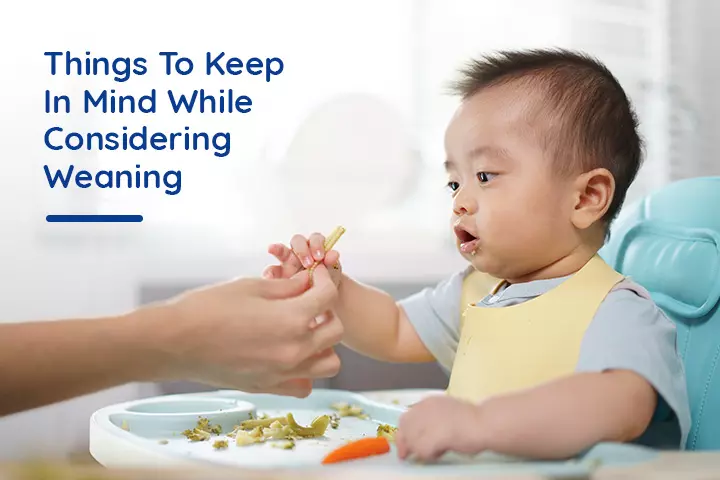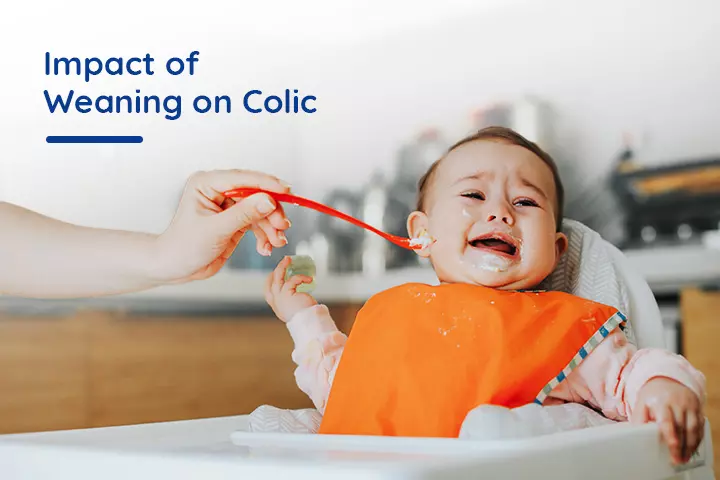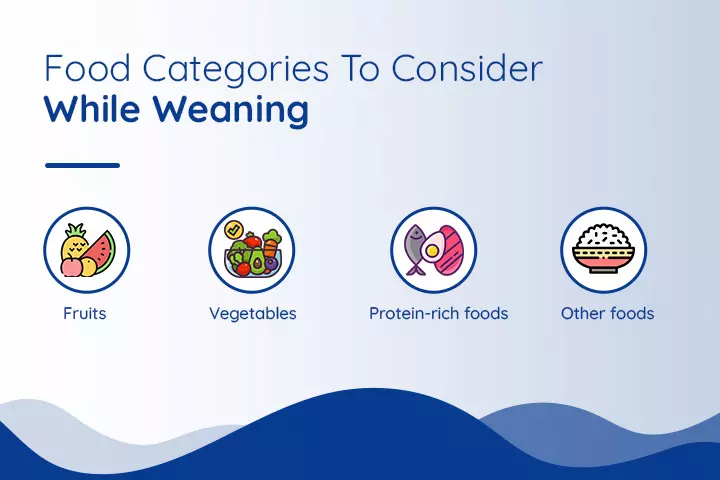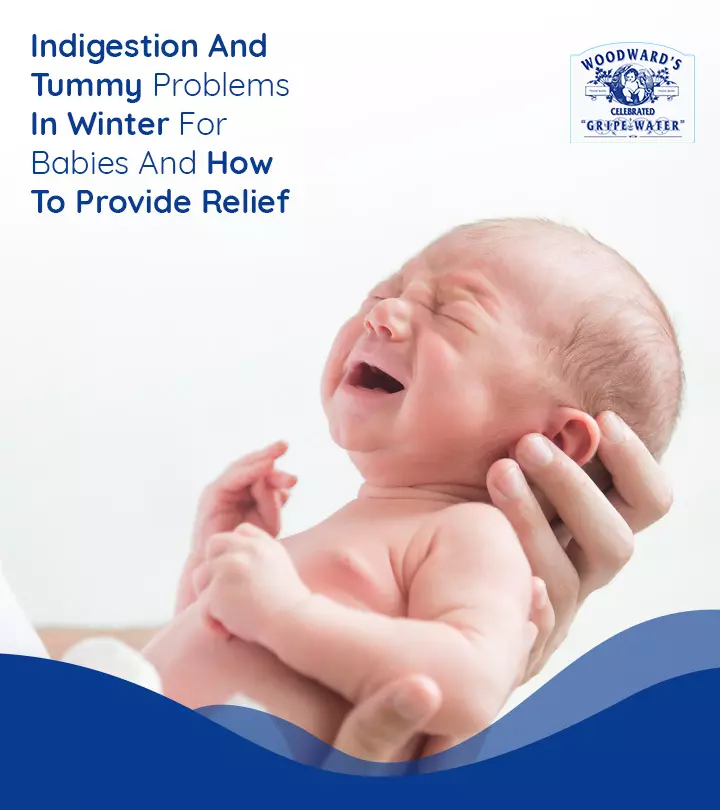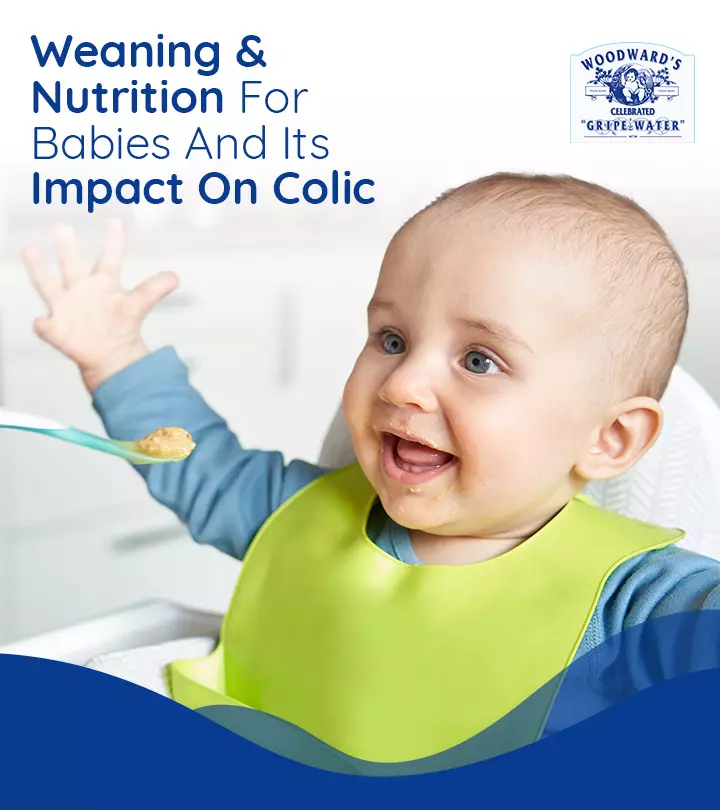

Image: Shutterstock
Every parent is familiar with the weaning process. It is a gradual process of switching a baby’s nutrition intake from solely breastfeeding to other foods like solids or even baby formulas. But finding the right time to start weaning is crucial to avoid health complications. Why is that? Since babies’ digestive systems are still developing, sudden changes in diet or introduction to new formulas or solid foods may result in unwanted complications and even affect your baby’s colic. Therefore, the doctor should be kept in the loop to advise parents about when and how to start weaning. This article will dive deeper into weaning and nutrition and their potential impact on colic.
Things To Keep In Mind While Considering Weaning
There is enough evidence to prove that babies should be slowly weaned off breast milk once they have reached six months of age (1). However, all babies have a unique build, so following the pediatrician’s advice is important. Babies sometimes have difficulty digesting and breaking down solid food particles, which can increase their colicky behavior. Since it is a personal choice, the time of weaning can differ, and parents can look for a few signs, such as their babies’ internal and external physical tolerance or interest in new foods. Some other signs to look out for –
- The baby’s ability to sit straight and support their head.
- Good oral development; their tongue’s ability to move the food around in their mouth and if they can push the food to the back of their mouth.
- A healthy gag reflex that helps in swallowing food safely instead of continuous vomiting or spit-ups.
- Development of hands, eyes, and mouth coordination to hold and eat the food.
Impact of Weaning on Colic
Certain foods can trigger allergies and cause reactions in babies. It does not only occur at the breast milk-only stage but can directly impact a baby’s colicky behavior if the weaning process does not happen smoothly. Unfortunately, knowing if your baby is allergic to something beforehand is impossible. So it’s crucial to take it slow with foods that can potentially cause stomach problems or add to your baby’s colic. If given in lesser amounts, it will be easier to spot reactions and eliminate that particular food from their diet. Some foods which may cause colicky episodes are – cow’s milk, eggs, gluten foods, nuts, fish, soya, and more (2).
How To Determine Your Baby’s Nutrition?
You can either introduce mashed or pureed textures and feed them or let them consume finger foods themselves (Small pieces of food to help with hand-eye coordination). The texture and type of food given, will depend upon the age of the baby. Some people combine both practices as there is no wrong or correct technique – what matters is if the baby is getting all the essential nutrients. Keep in mind that babies do not require any amount of sugar or salt in their diet. Excess sugar intake can lead to the rotting of their sprouting teeth, and salt intake can impact their developing kidneys.
Food Categories To Consider While Weaning
- Fruits– To make it easier for your baby, pick soft and ripe fruits that can be mashed or made lumpy. If you want to administer finger food, hard fruits can be cooked to make the texture smoother. Remove seeds or skin that may pose a choking hazard. Fruits include bananas, oranges, apples, strawberries, pineapple, kiwi, papaya, melon, plum, pear, etc.
- Vegetables– You can soften these veggies or blend them into any texture of your choice. Give weightage to green vegetables and carrots as they have a storehouse of nutrients for the baby to grow. Foods like broccoli, cauliflower, cabbage, spinach, peas, green beans, and carrots are the way to go.
- Protein-rich foods – Protein is a crucial nutrient that helps the baby develop their bodily functions and growth. The food types include lentils, pulses, adequately cooked eggs, chicken, fish, tofu, and nuts like peanuts and almonds (Beware of possible allergens).
- Other foods– Unsweetened yogurt contains calcium and protein and helps improve gut health. Foods like potato, sweet potato, oat, and rice are safe bets. To mix and mash these foods, you can use pasteurized, full-fat cow’s milk or goat’s milk. However, check if the baby is reacting to the milk first.
If you want to introduce liquids into your baby’s diet, you can opt for iron-fortified baby formula or choose effective digestive care like Woodward’s Gripe Water. This gentle ayurvedic formulation has Dill Seed oil and Sarjikakshara, which are known to help with acidity and other digestion issues. As a mild antacid that is non-alcoholic, it can provide immediate relief by bursting trapped air bubbles in their tummies. Gripe water helps calm down colic and is quite effective during the teething period, and that, in turn, makes weaning easier. Please check with your pediatrician for the appropriate dosage.
In conclusion, always consider your baby’s developmental stage and age when introducing any new food. Many doctors suggest that babies should be given appropriately cooked foods rather than served raw. Undercooked or raw foods can have dangerous bacteria that can adversely affect their health. However, irrespective of whether your baby is colicky or not during weaning, avoid foods like honey, hard nuts, or sticky foods like candy, as they are not only harmful for health but can cause your baby to choke easily.
References
- Starting baby on solid food
https://www.longwoodpeds.com/patient-education/nutrition/starting-baby-solid-food - Common Food Allergies
https://www.healthychildren.org/English/healthy-living/nutrition/Pages/Common-Food-Allergies.aspx
Community Experiences
Join the conversation and become a part of our nurturing community! Share your stories, experiences, and insights to connect with fellow parents.

